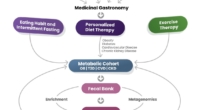Researchers at Osaka University have proposed a new method that uses AI to reconstruct images from human brain activity obtained by functional magnetic resonance imaging (fMRI) with an accuracy of almost 80%. They used an LDM called Stable Diffusion, which can potentially revolutionize psychology, neuroscience, and even the criminal justice system. The researchers used the Natural Scenes Dataset (NSD) provided by the University of Minnesota to train two different AI models that allowed Stable Diffusion to turn fMRI data into accurate imitations of images that were not part of its training. However, the proposed model is still in the nascent stage and needs refinement. The technology raises ethical concerns about privacy invasion and highlights the need for further research and testing to validate the accuracy of the method. Nonetheless, it has the potential to transform multiple industries, especially in medicine, and bring about tremendous advancements in the field of neuroscience.
Reading Minds with AI: Researchers Translate Brain Waves to Images.

Researchers from Osaka University have developed a new method to accurately reconstruct images from human brain activity obtained by functional magnetic resonance imaging (fMRI) using an LDM called Stable Diffusion. The technique has the potential to revolutionize fields like psychology, neuroscience, and even the criminal justice system.
How it Works
The researchers used the Natural Scenes Dataset (NSD), which contained fMRI scans of four subjects who had looked at 10,000 different images. They used a subset of 982 images viewed by all four subjects as the test dataset. Two different AI models were trained during the process. One was used to link the brain activity with the fMRI images, while the other was used to link it with the text descriptions of images that the subjects looked at. Together, these models allowed the Stable Diffusion to turn the fMRI data into relatively accurate imitations of the images that were not part of its training, achieving an accuracy of almost 80%.
Potential Applications
This technology has the potential to be used in various fields, including psychology, neuroscience, and the criminal justice system. It can help in constructing images of what someone is thinking, which is straight out of a science fiction movie. Furthermore, it can be used to determine if someone is lying in a criminal investigation. For instance, reconstructed images could show that a suspect was at the crime scene when they claimed to be elsewhere.
Limitations and Future Scope
Although this research paper is not yet peer-reviewed, the results have taken the internet by storm. However, it has limitations, such as the accuracy rate of almost 80%, and it cannot be used to read minds entirely. Future research could focus on improving the accuracy rate and expanding the dataset to include more complex and abstract images. Overall, the researchers’ Stable Diffusion method shows great potential in reconstructing images from human brain activity and could have significant implications for various fields in the future.
In a groundbreaking study, researchers from Osaka University have developed a new method that can regenerate accurate images from human brain activity obtained through functional magnetic resonance imaging (fMRI). The researchers used an LDM called Stable Diffusion to reconstruct images from human brain activity with impressive accuracy. This new technology has the potential to revolutionize fields like psychology, neuroscience, and the criminal justice system.
How it Works
The researchers used the Natural Scenes Dataset (NSD), which contained fMRI scans of four subjects who had looked at 10,000 different images. They used a subset of 982 images viewed by all four subjects as the test dataset. Two different AI models were trained during the process. One was used to link the brain activity with the fMRI images, while the other was used to link it with the text descriptions of images that the subjects looked at. Together, these models allowed the Stable Diffusion to turn the fMRI data into relatively accurate imitations of the images that were not part of its training, achieving an accuracy of almost 80%.
The Next Mind Reader?
The proposed model is still in its nascent stage, yet people were quick to react to this paper and termed the model as the next mind reader. The researchers also claimed that the study was the first of its kind where each component of LDM (Stable diffusion) was quantitatively interpreted from a neuroscience perspective. They did so by mapping the specific components to the distinct regions of the brain.
Limitations and Future Scope
Although the accuracy of this model is quite impressive, it was tested on the brain scans of the people who provided the training brain scans. Using the same data for training and test sets can lead to overfitting. However, we should not shrug off this paper as such publications attract researchers and we start seeing related papers with incremental improvements. Further research could focus on improving the accuracy rate and expanding the dataset to include more complex and abstract images.
Potential Applications
This technology has the potential to be used in various fields, including psychology, neuroscience, and the criminal justice system. It can help in constructing images of what someone is thinking, which is straight out of a science fiction movie. Furthermore, it can be used to determine if someone is lying in a criminal investigation. For instance, reconstructed images could show that a suspect was at the crime scene when they claimed to be elsewhere.
The Ethical Concerns
Although it’s quite intriguing, this technology raises some ethical concerns about the invasion of privacy. Also, there is still a long way to go before we can actually create the subjective experience of a dream. The model is not yet practical for daily use but we are getting closer to understanding how our brain functions. Such technology can also bring about tremendous advancements in the medical field, especially for people who have communication impairments.
Conclusion
If the refinement of the proposed model comes into the picture, this can be the next breakthrough in the world of AI. But the benefits and risks must be weighed before the widespread implementation of any technology. The proposed technology is exciting and has the potential to transform multiple industries but further research and testing are needed to validate the accuracy of the method.
Kanwal Mehreen is a software developer with a keen interest in data science and the applications of AI in medicine. They were selected as the Google Generation Scholar 2022 for the APAC region. Kanwal is passionate about sharing technical knowledge and writing articles on trending topics. They are also dedicated to improving the representation of women in the tech industry.
Don’t miss interesting posts on Famousbio









